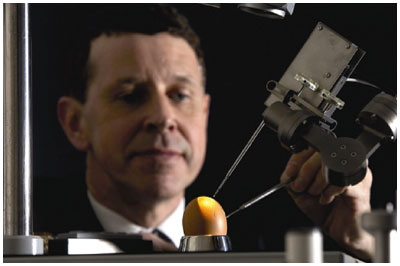The surgical drilling robot was developed by Professor Peter Brett from the School of Engineering & Applied Science at Aston University and tested in surgery by Mr David Proops, Ear, Nose and Throat Consultant Surgeon at University Hospital Birmingham NHS Foundation Trust.
It has been tested on patients needing cochlear implants. The drill is applied to the cochlea, the inner ear hearing organ, is aligned to the correct place and then drills a hole less than a millimetre in diameter to enable the cochlear implant to be inserted.
When working with a traditional surgical drill under the microscope the drill tip will naturally perforate the surface through the inner flexible boney tissue interface of the cochlea with the inner membrane and protrude into the space. Using the robotic micro-drill, the device is able to detect the approach of the drill tip as it approaches this tissue interface. It is then able to avoid penetrating the membrane, so avoiding drilling and other debris dropping into the ear. It is expected that this more precise means of drilling will lead to improved hearing for the patient following implantation.
It has been tested on three human patients - all with successful out comes. It drills a perfect hole, the perfect size, in the perfect place and to a perfect depth.
The drill is currently only being used for cochlear implants, but the potentials for wider surgery applications in the future are extensive. Simply put, it will revolutionise this type of micro-surgery.
Taken from www.aston.ac.uk/about/news/070329.jsp

Peter Brett with Robot Drill

